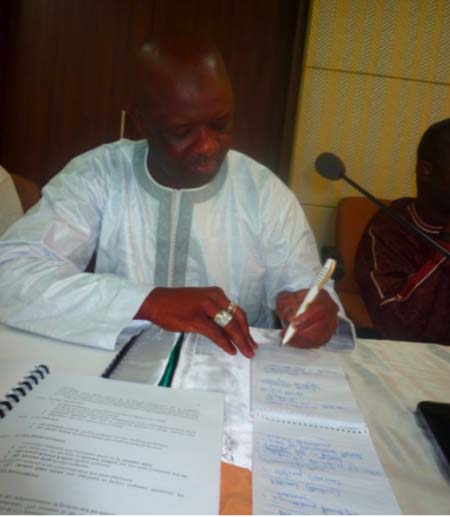
Out of the total network, 1,652 kilometers are categorized as primary roads with about 75 per cent of these being paved or are in the process of being paved.
The NRA MD was speaking on Tuesday while presenting the NRA’s report of activities for 2013 before the joint session of PAC/PEC of the National Assembly in Banjul.
The PAC/PEC later adopted the report after a daylong discussion on it.
He added that it was estimated in 1998 that only about 20 per cent of the total network was in a good process of being paved, with the remaining 80 per cent varying from fair to poor.
“Since that time,” he said, “there have been a number of significant road development projects, funded by the EU and bilateral donor agencies, and this has enabled the primary road network to gradually improve to a reasonable standard.
Mr Senghore told deputies: “The highest priority over the past few years has been given to the development of the primary road system, especially the North and South bank trunk roads.
“These are now close to completion with the collaboration of bilateral donors and international organizations.”
He said that apart from the Laminkoto-Passama Road, for which expression of interest has been received for the consultancy services, the remaining link on the trunk road would be the Basse-Fatoto and Fatoto-Koina road links.
According to MD Senghore, the improvement of the primary roads was seen as a priority, since the roads are essential economic growth corridors both for domestic and international trade, including serving as part of the Trans-Gambia network and providing direct access to international gateways.
It could also provide mechanisms for achieving the government’s regional development objectives through improved integration and enhanced communication within The Gambia, considering the large economic losses in terms of increased vehicle operating costs (VOC) and reduced economic production and development, which would result if the existing system were allowed to continue to deteriorate, he stated.
Hesaid improved maintenance and rehabilitation would continue to receive higher priority more than the construction of new roads, “except in instances where economic evaluation may show that new roads have rates of return equal to or greater than the returns on improved maintenance and rehabilitation”.
Mr Senghore further informed the PAC/PEC that the impact of traffic volume, classification and axle load to a greater extent “are directly proportional” to the design and life of all classes of roads.
In The Gambia, he added, traffic flows are low on most inter-urban and feeder roads (200-250) vehicles per day (ADT), with most rural feeder roads carrying less than 100 vehicles per day.
Road traffic flows are significantly higher on the urban and peri-urban roads serving Banjul through the Kombos, he said.
“In general, road traffic flows are considerably higher on roads in the west of The Gambia, particularly on the South bank road in close proximity to Banjul,” he added.



